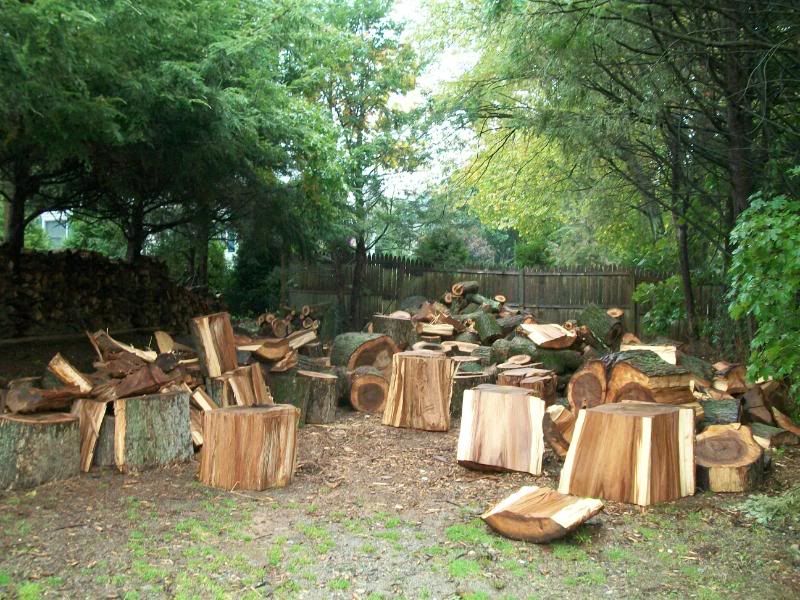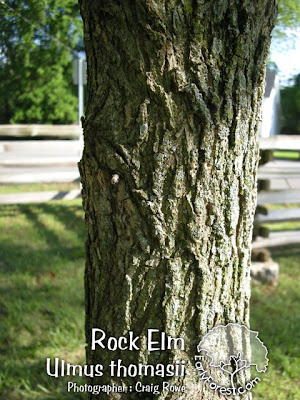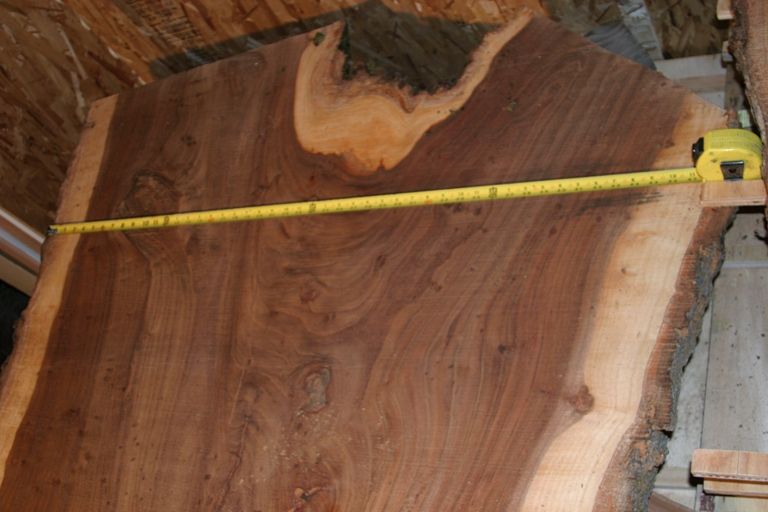1project2many
ArboristSite Guru
Howdy.
Great site. I've learned a bunch using it over the years. Now I'm looking for some help identifying some wood.
I picked up some logs early this spring which has been sitting outside all summer. I'm splitting it now and I need to know where to stack it. IOW, is it a dense, tough wood with higher BTU which belongs in the Dec, Jan, or Feb parts of the shed or is it better suited for the November and March rows? Here are my observations:
The bark reminds me of an old Maple with deep, wide furrows. The wood's wet. It's so wet even after sitting for 6 months in rounds that water will run out onto the ground during splitting. The growth rings are wide indicating a faster growing tree. The center of many of the logs is rotten and spongy, like a Maple can get. There is no noticeable or objectionable odor when splitting the wood. The newer wood at the outside of the tree is very pale, almost white, with a very dark heartwood that changes from brown-ish to a red tone as the wood dries. There are small marks that run counter to the grain, what I call striations, similar to what you'd find in a Maple. The wood splits easily with the splitter but it would be a biatch with a maul because the wedge has to be driven in several inches before the log will split. Once split the wood is a little stringy but not too bad. It begins to dry fairly quickly after being split. Today I burned a small piece in the outdoor burner and found a fair amount of white ash after the fire was out.
A few years ago I took down a Slippery Elm which was about 30" dbh. The tree was healthy and there was no decomposition inside the logs. Talk about a fight when it came to splitting. Sure, the splitter worked right through it but every piece had to be pushed completely over the wedge because even a small string missed felt like it it had the strength of a 2000# tow strap. This wood does not behave that way. Now, I've cut a fair amount of Slippery Elm and I always peel the bark off the logs before storing. It's not just the Elm beetles that get in there but there are a ton of other wood devouring bugs that like to live there, and there's a yellow-orange mushroom that will grow ouf of the bark as well. This log, when peeled, looked a little like the Slippery Elms but the bark didn't want to come off the log quite as easily. The slippery Elm also snapped quite a bit while burning but I didn't notice much snapping out of the mystery wood today.
I have never seen an American Elm AFAIK. Here in the Northeast most of them are gone. And if I have seen one it certainly wasn't passing across my splitting wedge. I did find some reference pictures in another thread on this site:
This is what my slippery elm looked like after splitting:

This was also posted as a picture of Elm. This might be what I have, but I can't see the fissures in the bark. But it doesn't look stringy like Slippery Elm.

Any thoughts?
Great site. I've learned a bunch using it over the years. Now I'm looking for some help identifying some wood.
I picked up some logs early this spring which has been sitting outside all summer. I'm splitting it now and I need to know where to stack it. IOW, is it a dense, tough wood with higher BTU which belongs in the Dec, Jan, or Feb parts of the shed or is it better suited for the November and March rows? Here are my observations:
The bark reminds me of an old Maple with deep, wide furrows. The wood's wet. It's so wet even after sitting for 6 months in rounds that water will run out onto the ground during splitting. The growth rings are wide indicating a faster growing tree. The center of many of the logs is rotten and spongy, like a Maple can get. There is no noticeable or objectionable odor when splitting the wood. The newer wood at the outside of the tree is very pale, almost white, with a very dark heartwood that changes from brown-ish to a red tone as the wood dries. There are small marks that run counter to the grain, what I call striations, similar to what you'd find in a Maple. The wood splits easily with the splitter but it would be a biatch with a maul because the wedge has to be driven in several inches before the log will split. Once split the wood is a little stringy but not too bad. It begins to dry fairly quickly after being split. Today I burned a small piece in the outdoor burner and found a fair amount of white ash after the fire was out.
A few years ago I took down a Slippery Elm which was about 30" dbh. The tree was healthy and there was no decomposition inside the logs. Talk about a fight when it came to splitting. Sure, the splitter worked right through it but every piece had to be pushed completely over the wedge because even a small string missed felt like it it had the strength of a 2000# tow strap. This wood does not behave that way. Now, I've cut a fair amount of Slippery Elm and I always peel the bark off the logs before storing. It's not just the Elm beetles that get in there but there are a ton of other wood devouring bugs that like to live there, and there's a yellow-orange mushroom that will grow ouf of the bark as well. This log, when peeled, looked a little like the Slippery Elms but the bark didn't want to come off the log quite as easily. The slippery Elm also snapped quite a bit while burning but I didn't notice much snapping out of the mystery wood today.
I have never seen an American Elm AFAIK. Here in the Northeast most of them are gone. And if I have seen one it certainly wasn't passing across my splitting wedge. I did find some reference pictures in another thread on this site:
This is what my slippery elm looked like after splitting:

This was also posted as a picture of Elm. This might be what I have, but I can't see the fissures in the bark. But it doesn't look stringy like Slippery Elm.

Any thoughts?










